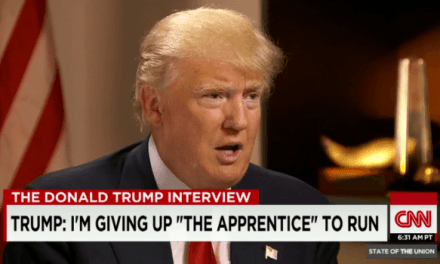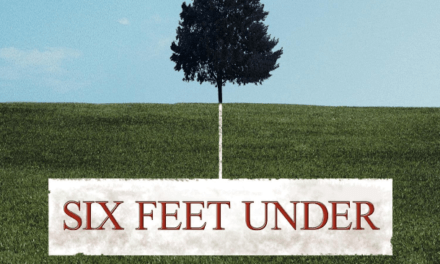
Why has the television business made it so hard for its users to find something they want to watch? It used to be so easy. You turned on the TV and instantly there was something, if you didn’t like that you could hop from one channel to another… or use the handy scheduling grid to find what was on when. There is no equivalent for the digital age. There’s nowhere where you can find and search everything that’s available on broadcast and broadcast catchup, Netflix, Amazon and Vice, Sky, Virgin and BT, and OTT services like Now TV. Nor is there a price comparison service, not even from a heavy TV advertiser like GoCompare. Each platform has its own offer, its own deals and packages, and its own search mechanism. By trying to offer more choice, television has become an industry that hides its products from its customers.
Here’s what happens when I turn on my digital TV.
Everyone has their own ways of searching. You flick through all the channels on a platform:
- you find a list and work through it
- you look at the ‘recommendations’ that your suppliers’ algorithms have generated
- you get recommendations from social media friends… or even real friends
- you’ve seen a trailer or ad hoarding (that’s a billboard to US readers) and try to find the show
- you know vaguely what you want and try to find something that fits
- you refer out from all the offers to third party sites like Rotten Tomatoes which cut the hype and give better descriptions.
It’s a lot of faff in other words. Just how much faff is shown by a fascinating report on international viewing habits produced by Ericsson. It reveals that
“the average person in the US spends 23 minutes every day trying to find something to watch on broadcast TV. In total, that person will spend 1.3 years of their life swapping channels and navigating the TV guide. This is similar for consumers in more than half of the countries in this year’s study”.
A year and a four months of your life! And VOD (Video On Demand) services demand even longer:
“ VOD services such as Netflix, Amazon Prime or Hulu nevertheless require more time from consumers to find content they want to watch, as the on-demand viewer has to actively pick something to watch. The consumer frustration with hundreds of linear channels and nothing to watch can thus be contrasted with viewers spending 45 percent more time searching in VOD services. And yet, 63 percent are satisfied with the content discovery in their VOD service, while only 51 percent of consumers say the same for their scheduled linear TV service.”
That’s because consumers believe that they are more likely to find something on VOD… eventually.
After eighty years of TV broadcasting, how on earth did we end up here?
A discussion last week at Bergen University’s InfoMedia Institute revealed just how difficult it will be to make ‘content discovery’ easier and ‘more intuitive’ for users. Kristian Bruarøy from TV2 Sumo, one of the world’s earliest OTT services, speculated that “metadata is becoming more important than data”, meaning that the ways that TV programmes are defined (and so can be searched) is crucial to the process. At the moment, most broadcasters and suppliers of TV material have pretty crude metadata. Most of it is factual: who stars, what’s the location, what is the subject matter (crime, cookery etc), and what’s the genre.
Even the genre definitions can be a bit weird. Genre definitions, as all critics know, are notoriously fluid, and in addition most innovation in TV comes about through generic crossovers or recombinations… As a result, all those “if you liked that, you might like this” recommendations are pretty hopeless. The best are derived from information about what other viewers have done. There is no form of metadata that allows programmes to be found on the basis of their emotional content, their emotional ‘temperature’, or the feelings that they engender in their viewers. And that is what TV, in theory anyway, is all about.
Add into the mix the clunky way that TV remote controls interact with the screen, and it becomes a real chore to find content on the big screens in your home. If you use the remote control, you have to toggle across, letter by letter… unless you have managed to link up your smartphone to the TV, which you can only do with certain compatible brands and a degree in geekery. There’s no keyboard on the remote (that remark sounds like a Tom Waits song title). No wonder people are driven from the TV to the tablet or the smartphone: at least those technologies make it easy to enter your search terms. Even then, you find that every supplier has a different way of organizing their graphic user interface. Do you scroll down or sideways? How do you find more information? The basics still have to become a generalized convention. And of course, none of these platforms provides anywhere to bookmark for later. “Not now, but later” is a natural response to seeing something that engages your curiosity but doesn’t fit the moment. The current TV industry fails to cater for it.
Of course, we now take it for granted that we are forced to search over multiple platforms. My modest TV set-up is average for the UK market. It includes a free-to-air Freeview platform with about 90 channels. About half of UK households pay to have Sky, or Virgin or BT with their multitude of services and exclusive sport and movies. All the major broadcast suppliers have catch-up services, varying from brilliant (BBC iPlayer) to embarrassingly awful (ITV Hub). Then there are the subscription services. Netflix has become a ‘walled garden’ whose primary focus is their own products along with more movies. Amazon Prime is a curious add-on to a next-day delivery service, where you get movies and TV material (some of it produced by Amazon and exclusive to them). All of these appear as “apps” on my TV. And additional bits of technology (‘boxes’) can provide more OTT services: mine is Now TV, limited access to Sky-on-the-cheap, provided by an additional box. All these different suppliers keep their information to themselves. Bruarøy reports that Apple’s attempt to enable Siri to give a reply to the request “Siri, show me something” was frustrated by the refusal of several major US players to enable their catalogues to be searched.
This is a terrible mess. Hapless consumers are faced by multiple suppliers who have inadequate metadata descriptors of their offerings which have to be searched using the most primitive of tools.
The digital promised us access to everything, to all the back catalogue. But in fact it has done the opposite. By making search so difficult, the ‘long tail’ remains invisible. And so suppliers quietly remove it, as Netflix has recently done with much of its movie back catalogue.
So what can be done?
Nothing can force commercial companies to share data, or even to harmonise search and discovery interfaces. Equipment manufacturers ae probably looking forward to voice activated search for TV sets rather than thinking about improving systems for manual data entry. But in the area of metadata, there is one existing area that could be used to improve the searches themselves: subtitles.
Almost all of TV output carries subtitles for the hard of hearing. Some even have visual descriptions as well. Already Learning on Screen’s Box of Broadcast service aggregates the subtitle information into a searchable transcription of each programme. Soon it will enable searching across all its thousands of hours of broadcast TV. So it is possible to imagine the development of forms of searching which look at the frequency of particular words or phrases. These could provide a much better indication of the emotional content of a programme than the feeble descriptions that are currently used.
This is a technique of natural language analysis that is used on literary texts. Using it, all kinds of unexpected similarities can be found between programmes. The emotional character of a series can be defined from the frequency of insults or apologies, indications of affection or malice. It presents substantial technical challenges. But the prize would be something far better than the current information that passes for metadata in the world of television.

JOHN ELLIS is Professor of Media Arts at Royal Holloway University of London. He leads the ADAPT project on the history of technologies in TV, funded by a €1.6 million grant from the European Research Council. He is the author of Documentary: Witness and Self-revelation (Routledge 2011), TV FAQ (IB Tauris 2007), Seeing Things (IB Tauris 2000) and Visible Fictions (1984). Between 1982 and 1999 he was an independent producer of TV documentaries through Large Door Productions, working for Channel 4 and BBC. He is chair of the British Universities Film & Video Council and also oversees the Royal Holloway team working on EUscreen. His publications can be found HERE.





